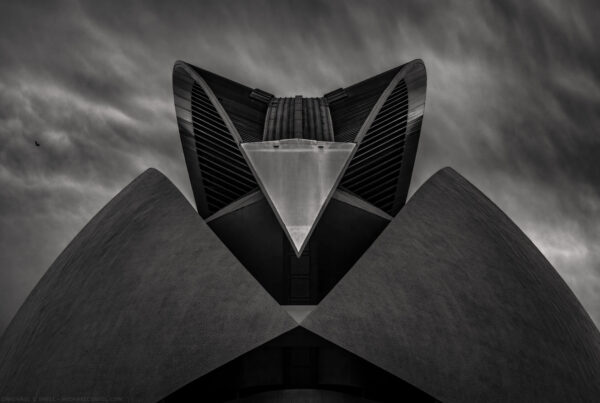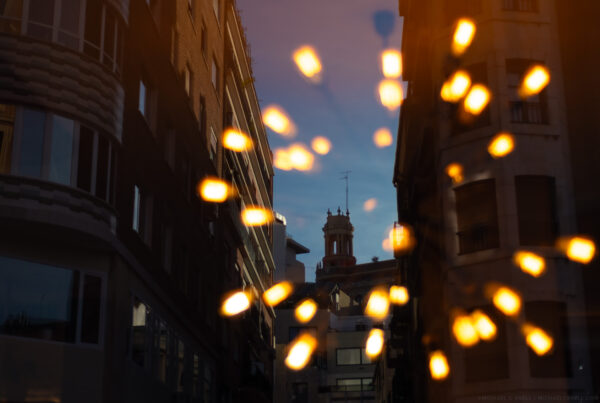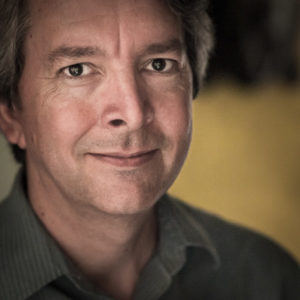Click the photo to open a version that fits your screen.
Hot Air Balloons over the Mortuary Temple of Seti I
Time for another “oneshot,” where I tell the story behind getting that one, single photo that sums up a destination or experience.
Back in 2009, on a trip through Egypt, I had an opportunity to join a sunrise hot air balloon ride near Luxor and the Valley of the Kings. When I’m traveling, I’m always looking for unique angles and perspectives for photographing familiar places. I like putting the camera down low and shooting from ground level, or searching for balconies or rooftops that I can access to get a higher view. If you shoot everything from a standing height, all of your photos will look ordinary because it’s the way we’re used to seeing the world as we walk around. Aerials are also a great way to get a new perspective and hot air balloons work great as photo platforms.
The shot above is pretty much the shot I was hoping for, although I can’t say that I was that familiar with the Mortuary Temple of Seti I prior to this. But it was the grouping of balloons over recognizably Egyptian ruins that I was after, and the morning came through for me with gusto.

Arriving at the lift-off area just before sunrise, we piled into our assigned balloon basket. “We” were a group of 23 people in this one basket alone and there were several other balloons being prepared for lift-off at the same time. A couple of months later I would find myself climbing into a three-man balloon in New Mexico. When I told the pilot I had recently been in a balloon with a couple of dozen other people, he responded, “you must have been in Egypt!” Apparently, at least at that time, Egypt was the only place where balloons were allowed to carry so many passengers. Maybe best I hadn’t known that beforehand.
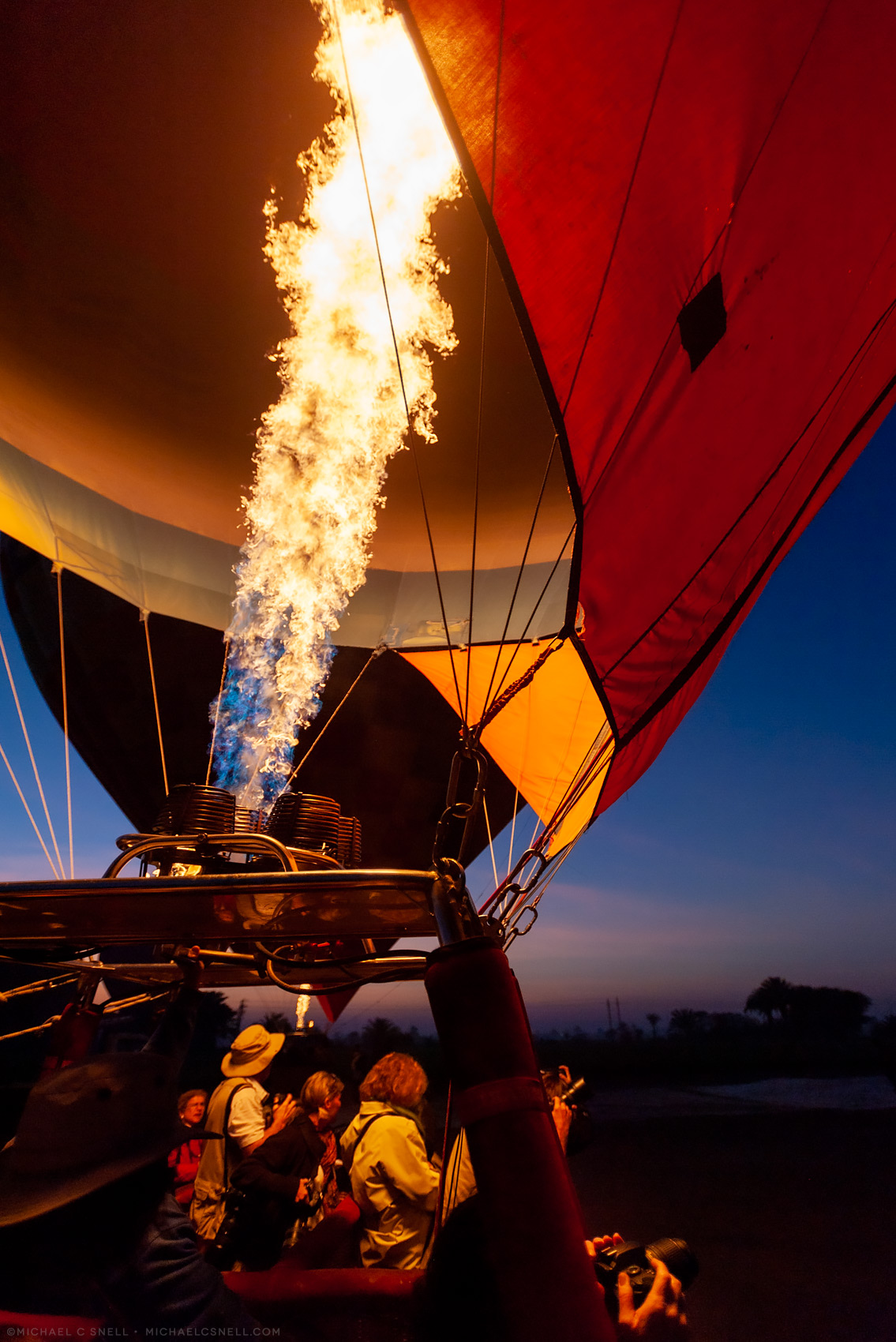
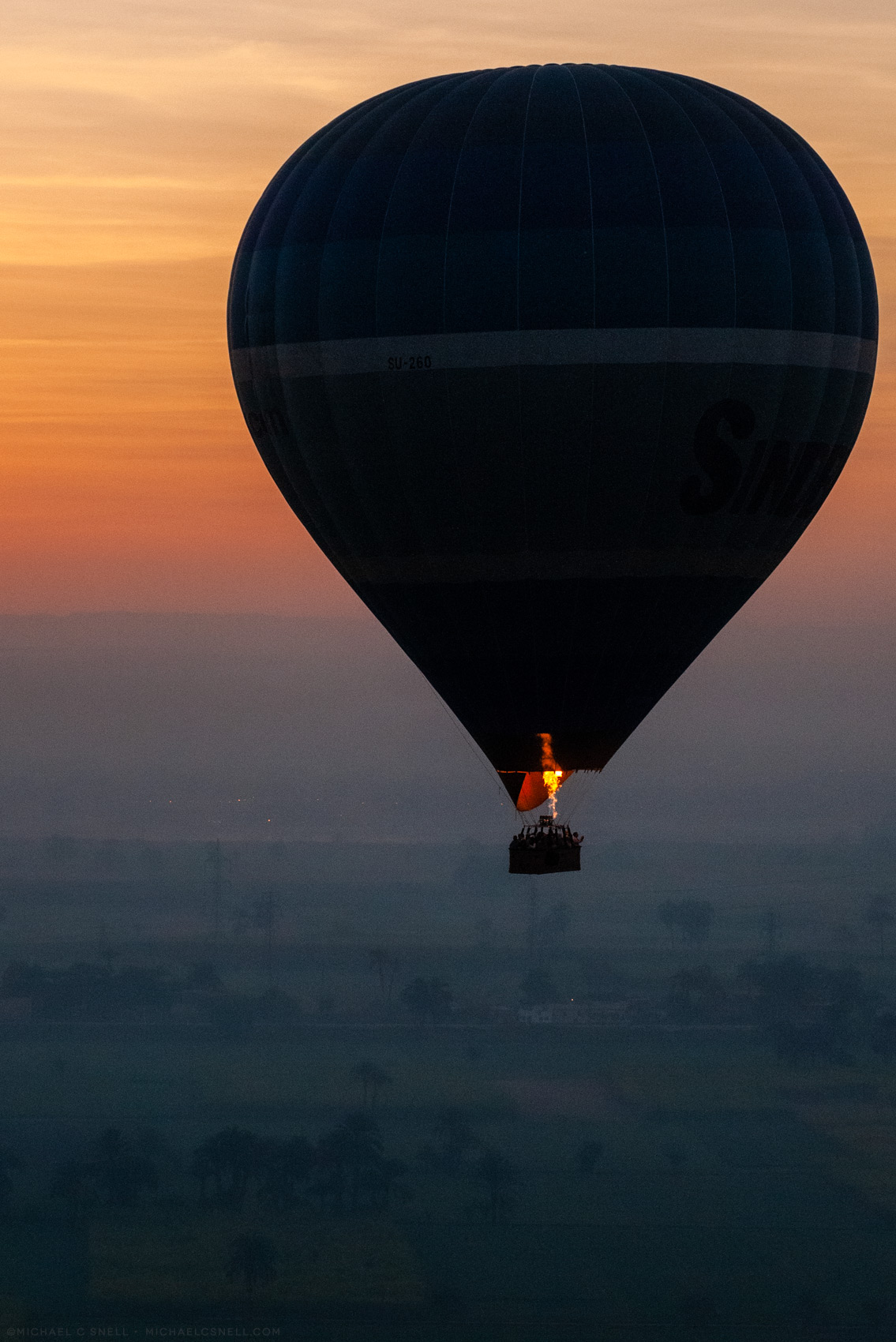
I managed to claim an outer corner of the basket early so that I could get the widest angle of view possible for photography. You certainly didn’t want to be stuck in the middle where all you would see were other people’s heads every way you looked. My corner claimed, I made sure I had all my camera gear handy.
I was shooting with a Nikon D700 full-frame body mounted with my trusty Nikkor 17-35mm lens. I also had a D300 crop-sensored body with me and I actually managed to make a few in-flight lens changes on it, switching between an 80-200mm zoom and a 10.5mm fisheye. Not something I would encourage others to do where the stakes of dropping something were so high.
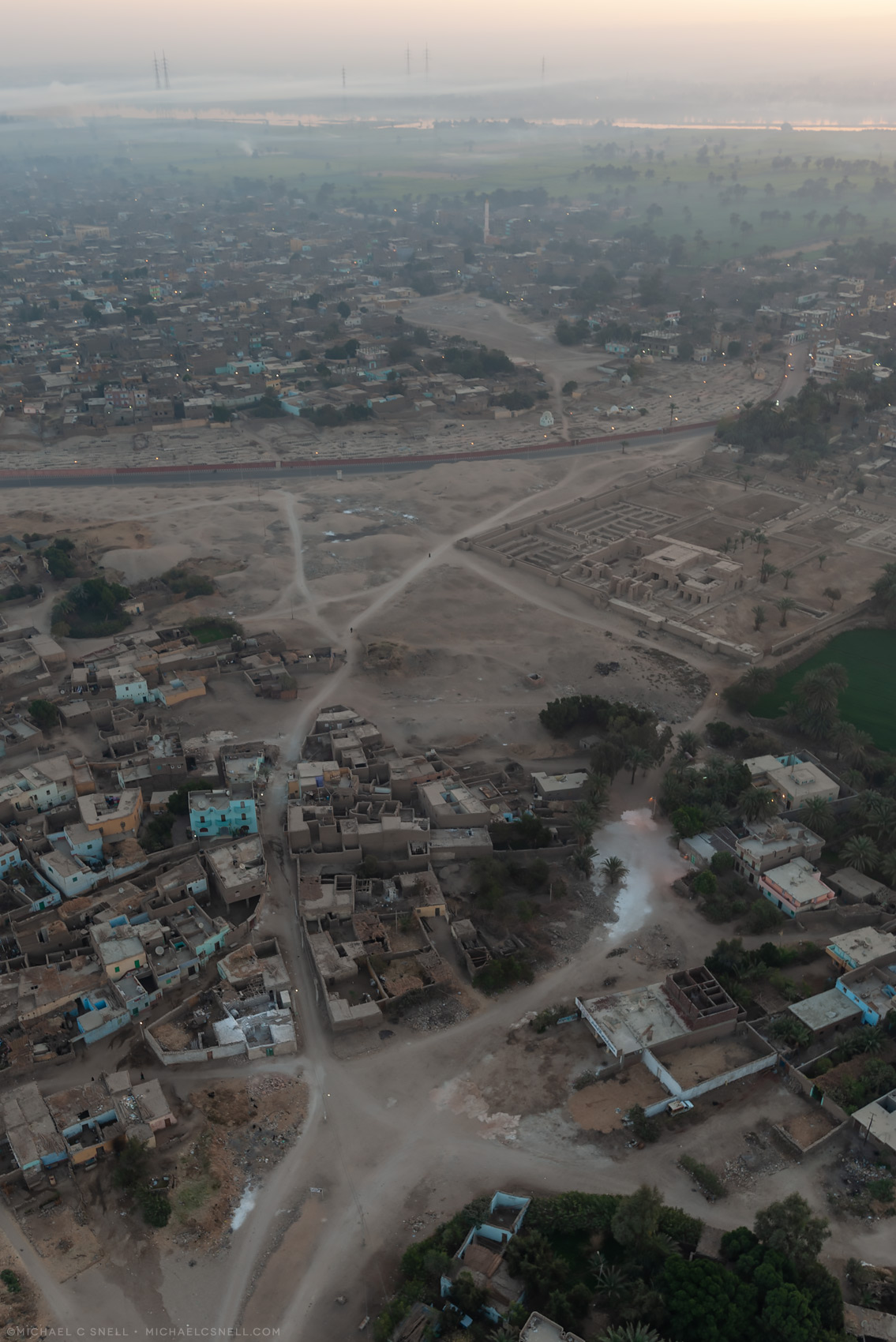


The pre-dawn views were beautiful, but things really started to get interesting as the sun came up over the Nile and made the temples glow golden in the early-morning light.
I shot over 500 frames in the roughly 2-hour flight. That may sound like a lot to some, or not many to others, but I do tend to be somewhat frugal in my shooting — probably due to my getting started in the film days. Had I still been shooting transparency film, that would have been the equivalent of 15 rolls of film at 36-exposures each. I never would have gone through so much film in such a short period of time, so 500+ photos was a lot for me. I think film taught me to anticipate the moment and to try and get each composition in one frame. I’ve never been one to fire off a burst of 10 frames figuring that one of them will be the moment I wanted. Even though there is no additional cost to shooting more frames anymore, I still tend to be conservative and time my shots as best I can, one by one.

The image at the top of this post came about halfway through the ride. Frame 198, from the looks of the metadata. It was the highpoint in terms of the light and our position coming together. Balloons are great platforms for photography because they are so steady and calm. You’re traveling with the wind, so there is no wind in the basket. But, you are somewhat limited in your course. I’m sure a pilot can change direction to some degree by rising or falling to find other currents, but on a public ride like this, they are on a schedule and can’t really respond to individual requests like, “can we pass over that one more time, a little lower?” I’ve shot from small planes and helicopters, too, where my photography was the whole point of the flight and I could request “one more pass” and the pilot would happily oblige. But this was basically a commercial flight and it would be unfold how it would unfold, regardless of my input.
Once we landed, I realized even more how much our flight had been planned and predetermined.
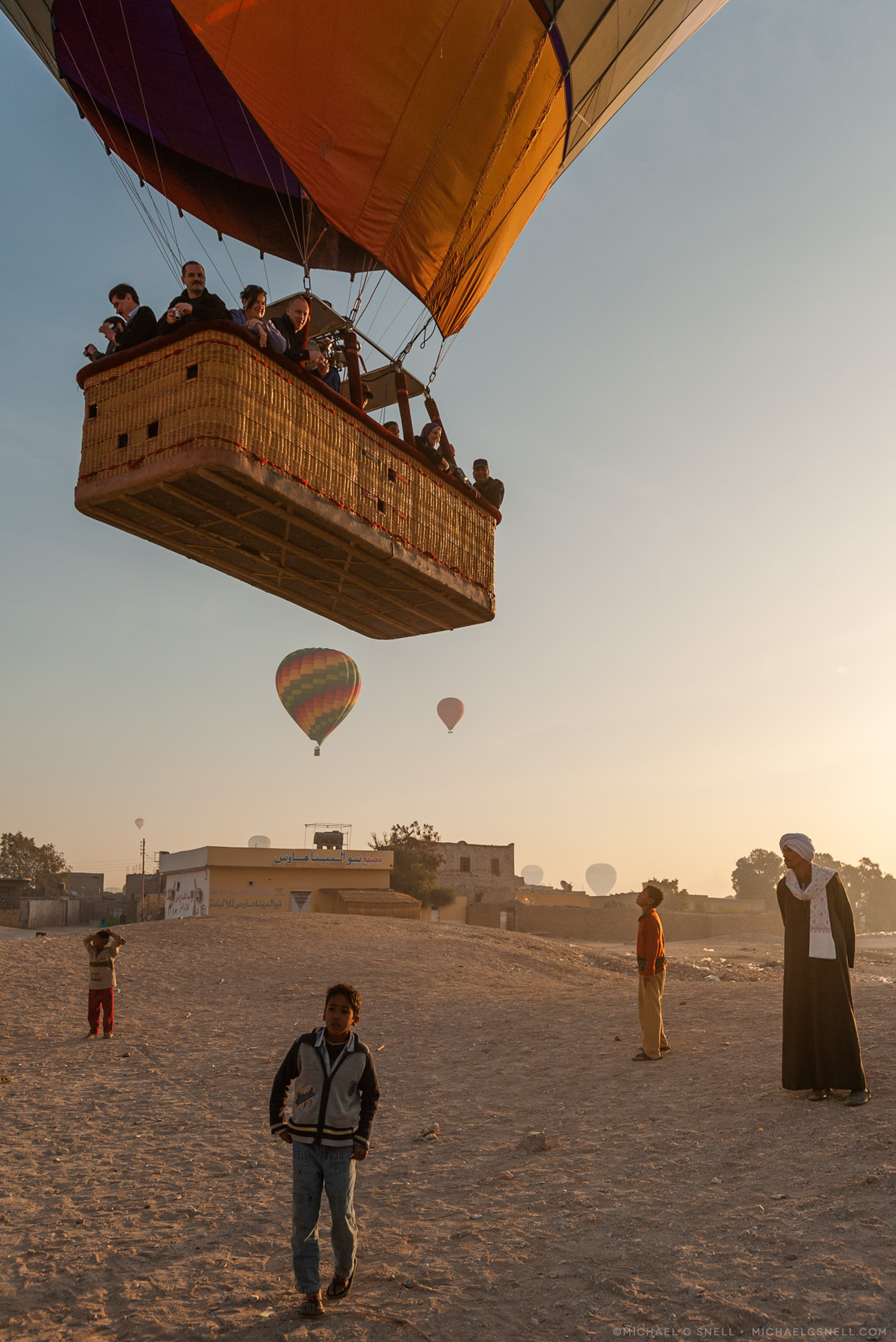

As we approached the ground, crew arrived in several trucks and helped guide our balloon gently to land. As we were being unloaded, another group of tourists was spilling out of the trucks and being loaded back into our balloon. As soon as we were out and they were in, the balloon shot back into the sky for the second tour of the morning. I have no idea how many balloons were aloft that morning, nor how many trips each balloon took, but it was obviously a booming industry.
As we watched our balloon rise back into the sky, someone produced a drum from somewhere and a celebratory dance commenced.
One last look at the shot of the morning, along with the technical specs for those who are interested in that type of thing:
Nikon D700
Nikkor 17-35mm f/2.8 @ 30mm
ISO 200
f/2.8
1/320 of a second

